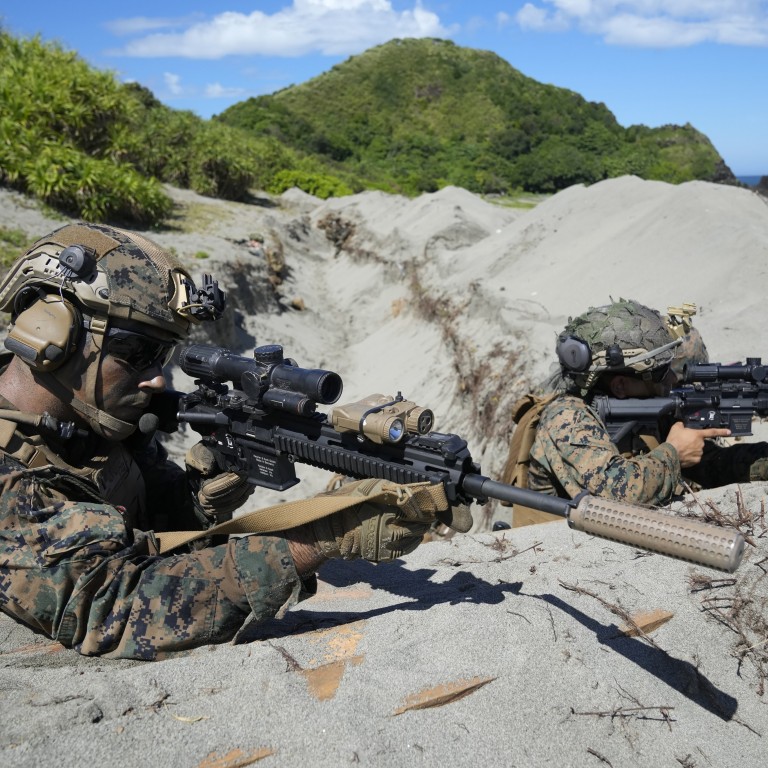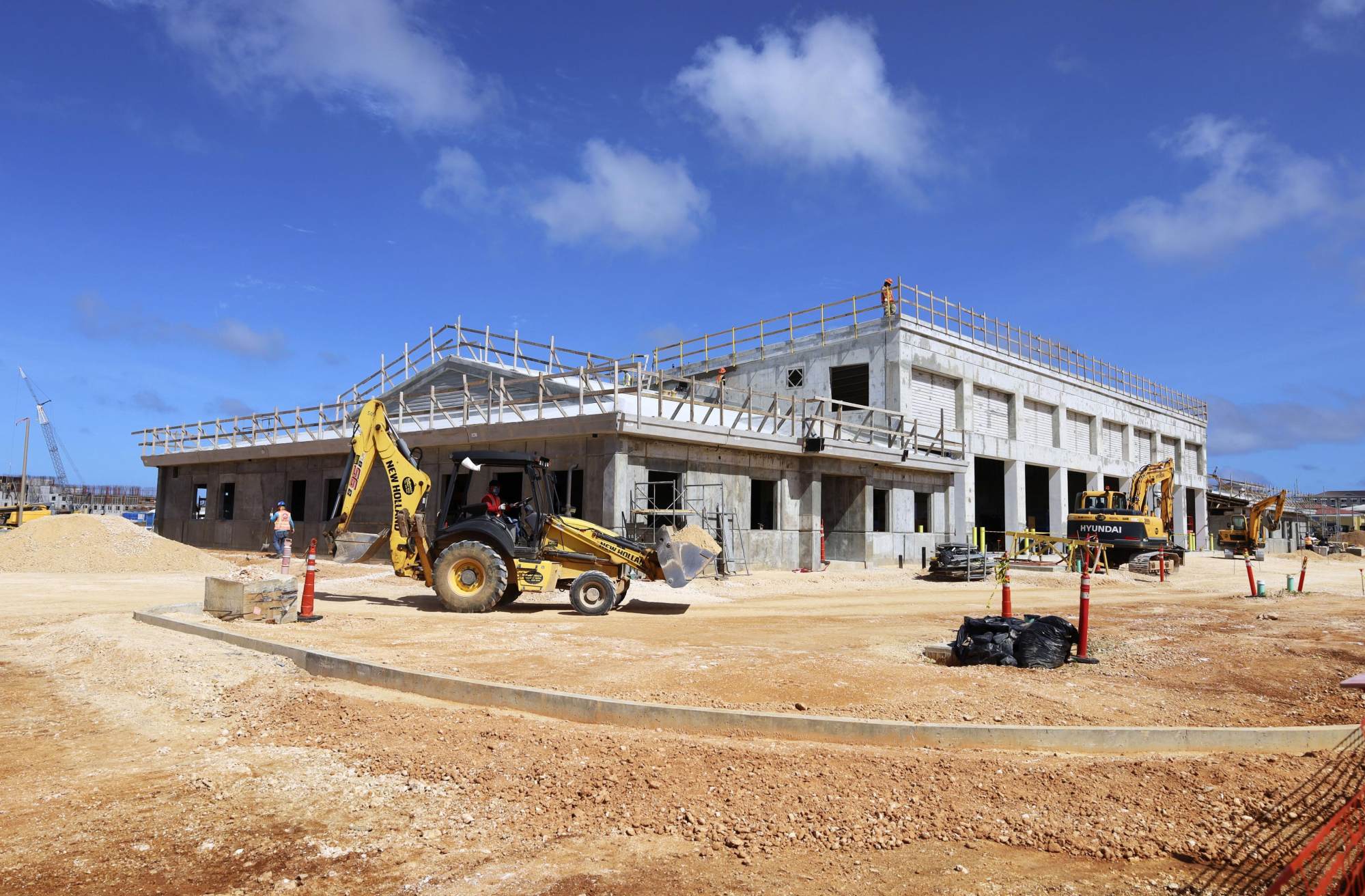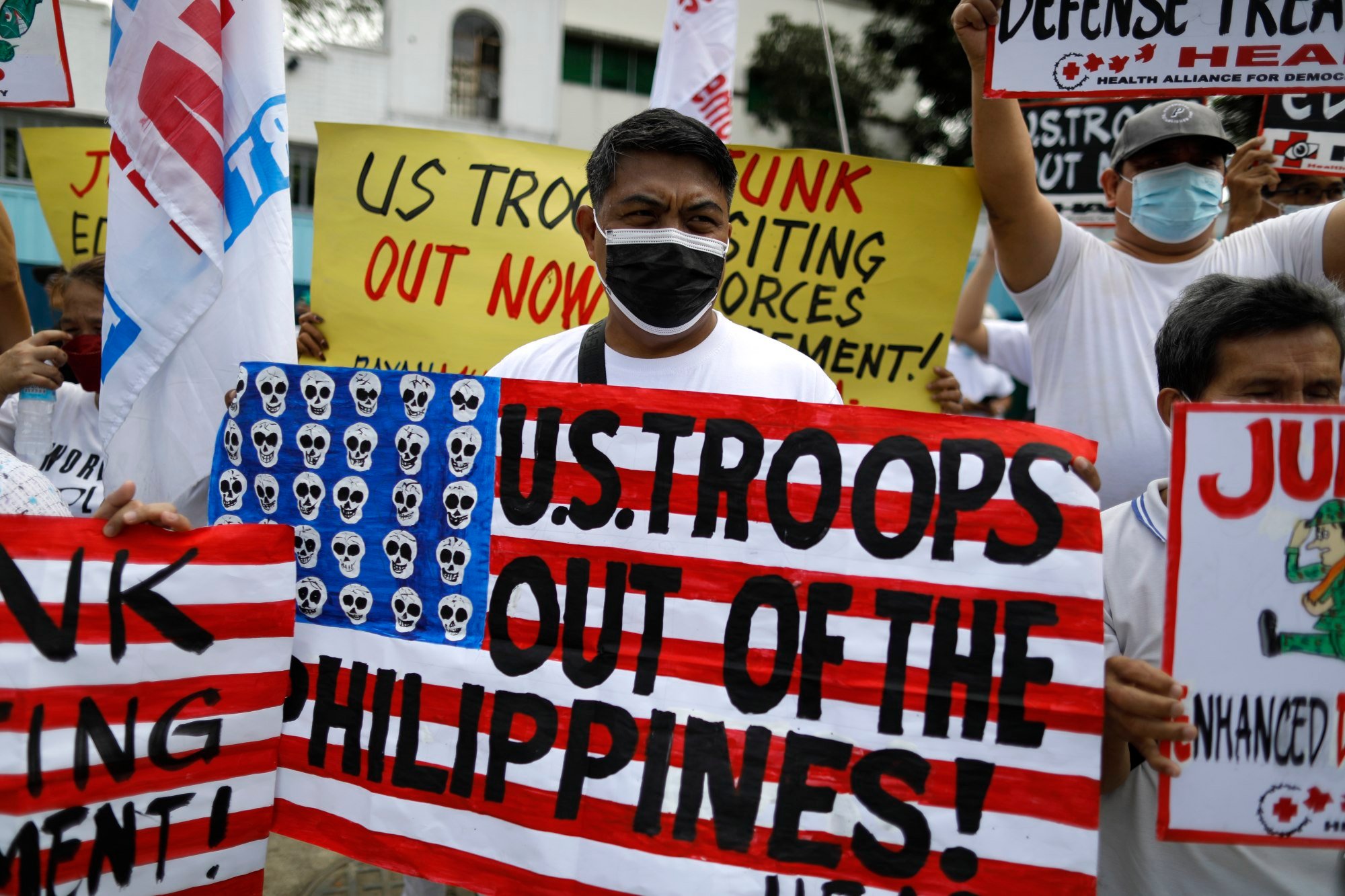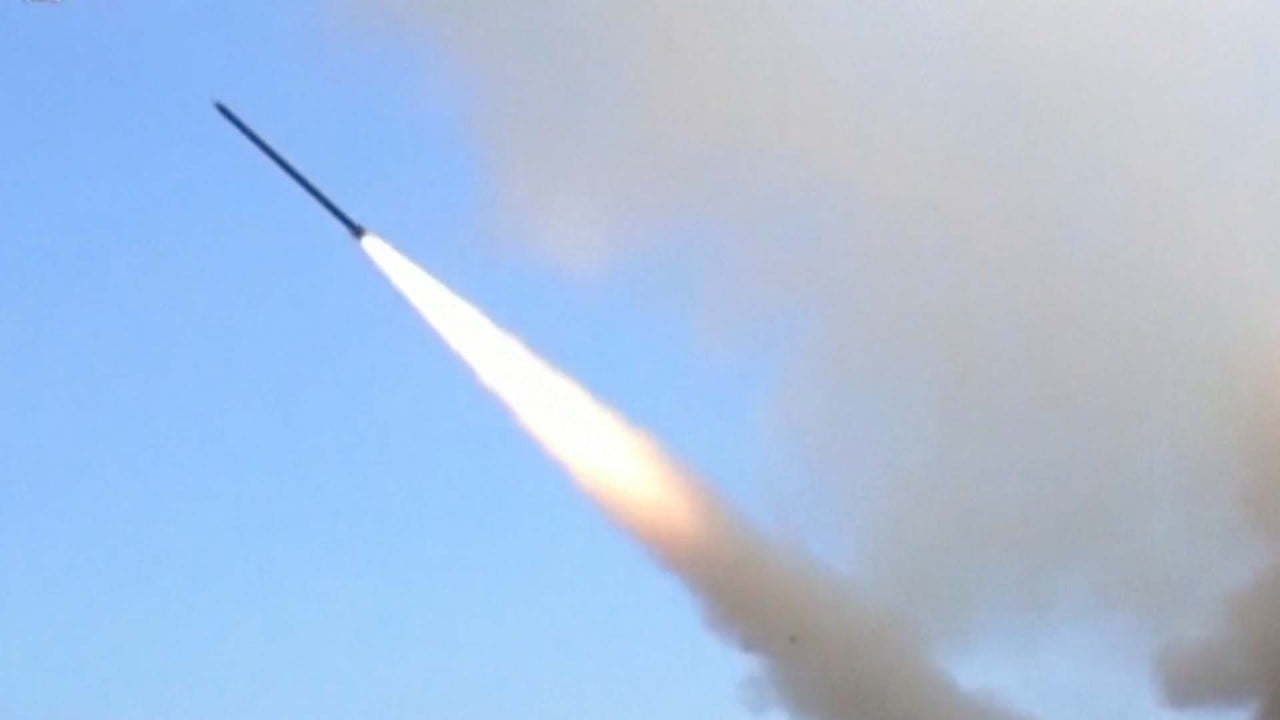
As US military ‘encircles’ China, does Asean ‘quietly welcome’ it?
- From the Philippines to Australia to Japan – and a new US Marines base in Guam – more American troops and military assets are headed for Asia
- China is likely to interpret it as ‘encirclement’, analysts say – but for some in Southeast Asia an increased US military presence is a ‘public good’
The US Marines Corps also opened a new base in Guam last month – its first in 70 years – that aims to eventually house some 5,000 marines tasked with detecting and countering threats in the region, who would be key in the event of a conflict with China.

China wasn’t mentioned by name in the joint statement announcing the US-Philippines agreement, but during his visit to Australia earlier this week US Defence Secretary Lloyd Austin made it clear that Beijing’s actions in the region were of concern.
“China’s dangerous and coercive actions throughout the Indo-Pacific, including around Taiwan, toward the Pacific island countries and in the East and South China Seas, threaten regional peace and stability,” he said.
Analysts said the build-up of an American military presence in the region was not unexpected – many of the recent developments required years of negotiation and work – but it did signal that Washington was taking concrete steps towards sharpening its defence strategy.
‘This is the fate of Taiwan’: island stays on guard as superpowers square up
“The US is executing its intent to expand its presence in the Indo-Pacific,” said John Bradford, a senior fellow at the S. Rajaratnam School of International Studies (RSIS) in Singapore.
“Three subsequent presidential administrations have reiterated American interest in this region as it is the world’s socio-economic fulcrum and their decisions strengthen the US position here.”
With the exception of China, Asian nations would largely welcome an increased American presence in the region, analysts suggested, especially amid Beijing’s increased assertiveness in its own backyard.
‘Dramatic’ defence moves
Carl Thayer, professor emeritus of politics at the University of New South Wales in Australia and a specialist on Southeast Asia, said recent developments proved that the Biden administration was “definitely stepping up” military engagements in the Indo-Pacific region.
Earlier this week, Japanese media reported that the US had suggested deploying medium-range missiles in Japan as part of efforts to bolster its defences in the East and South China Seas.
“The US has two major motivations. The first is to alter US force posture to more effectively deal with potential Chinese threats to Taiwan and to the Indo-Pacific in general,” Thayer said. “Second, the US seeks to reassure allies that their alliances with the US are ironclad.”

Collin Koh, a research fellow at RSIS who specialises in naval affairs in the Indo-Pacific, touted the Philippines’ deal as a “quite dramatic” development. The pact – formally known as the Enhanced Defence Cooperation Agreement – previously gave the US limited access to five sites, and allowed Washington to rotate its troops and build facilities.
While the locations of the four additional bases agreed this month have not been revealed, analysts expect them to be in the northern Philippines, which overlooks key waterways. “It is strategic because it is the envisaged waterway through which US forces coming in from the east, meaning from Guam or Hawaii, will pass through” Koh said.
This would be “especially important”, he said, as the bases were likely to oversee potential flashpoints in the South China Sea – which Beijing claims almost in its entirety – and around Taiwan.
“What we are seeing here is that the recent agreement essentially ramps up more options for the US and it is rather unprecedented,” Koh said.
An increased US rotational presence would also offer American troops greater opportunities to train and interact with other states in the region, Thayer added.
‘Stay vigilant and resist’
Unsurprisingly, the Chinese government was quick to protest the expansion of the US-Philippines agreement on military bases. Its embassy in Manila said Washington’s actions “escalate regional tension and undermine regional peace and stability”.
When in Manila, Austin also discussed with Philippine officials about restarting joint maritime patrols in the South China Sea, according to a read-out from the US Defence Department.
“The US, out of its self interests and zero-sum game mentality, continues to step up military posture in this region … During his visit, the US secretary of defence smeared China on the issue of South China Sea to advance the anti-China political agenda of the US,” the Chinese embassy said.
“It is hoped that the Philippine side stays vigilant and resists from being taken advantage of and dragged into troubled waters.”
China to take cautious tack in wake of US-Philippine base deal: analysts
Bradford, the senior fellow at RSIS, said the expansion of the military basing agreement would provide China “with something to point to when it argues that it is being encircled by the US military”.
“The geographic truth is that when a nation sits at the centre of the region and antagonises its neighbours on three sides, then those neighbours will react by engaging self-defence partnership activities that appear on a map to be like encirclement [from China’s perspective],” he said.
But apart from the usual rhetoric, the RSIS’ Koh said he felt that China would likely not be too reactive. “China regards itself as a resident power in the region and it is considered to have the immutable geographical advantage. The South China Sea and Taiwan are right in its neighbourhood,” he said.
Beijing had likely anticipated these new developments and “has not been sitting idle”, he said, adding that “of course [an increased US military presence] is discomforting, but I don’t think it will provoke a strong reaction from China”
A welcome development?
As China continues to assert itself on the geostrategic front, the US’ recent moves to boost its military presence will be embraced by Southeast Asian nations that are keen to maintain a balance of power in the region, analysts said.
A survey of 1,308 Southeast Asians with policymaking powers by Singapore’s ISEAS-Yusof Ishak Institute published on Thursday showed Washington’s popularity stood at 61 per cent, up from 57 per cent last year.
The region’s receptiveness towards Washington has also manifested itself in what observers say are intensified joint exercises between US forces and regional militaries.
In an interview with the Associated Press this week, Major General Joseph Ryan, commander of the US Army’s 25th Infantry Division based in Hawaii, said such drills provided “some deterrent effect against an adversary in the region”, without being more specific.

Bradford, the RSIS researcher, said Washington’s regional partners and allies would generally see the latest developments as a “positive demonstration of American commitment to become even more engaged and relevant”.
The positive side-effect of a greater US military presence in the region is that the rest of the countries can be free-riders ... [it’s] often seen as a public good
Other nations also had relatively warm relations with Washington and were unlikely to reject advances made by the US, such as the expansion of military base access under the agreement with the Philippines, Thayer added.
Some observers have suggested in recent days that the Philippines offering the use of more military bases to the US could put pressure on other Southeast Asian nations to do the same, but Koh, the RSIS fellow, said he felt this would not be the case.
Countries would have to contend with a likely backlash from China if they offered the US a similar proposition, he said, which would ultimately work against their interests. China is a major trading partner for Southeast Asia and regional governments have been trying to balance their interests as the US-China rivalry has deepened.
“They do not want to be seen as helping the US contain China,” Koh said.
Philippines steps up South China Sea patrols, overflights as tensions flare
Instead, he said the expanded US-Philippines agreement could actually reduce pressure on other governments. “To put it bluntly, this reinvigorated Philippine-US deal may not be a bad thing for us because it somehow does reduce the pressure on other regional countries in offering alternative bases for the US. It gives us more room to breathe,” Koh said.
“The other, more tangible and positive side-effect of a greater US military presence in the region is that the rest of the countries can be free-riders. The additional military presence is often seen as a public good.”
Koh said recent developments had shown that the US would heavily rely on its existing alliances to resist Chinese assertiveness, including by strengthening ties with Australia, Japan, and South Korea.
“The US is now hoping to cultivate more and get as much as possible out of its existing relationships. In Southeast Asia, at least, I expect the Philippines to be the focus for them at least for this year and next year,” he said.


